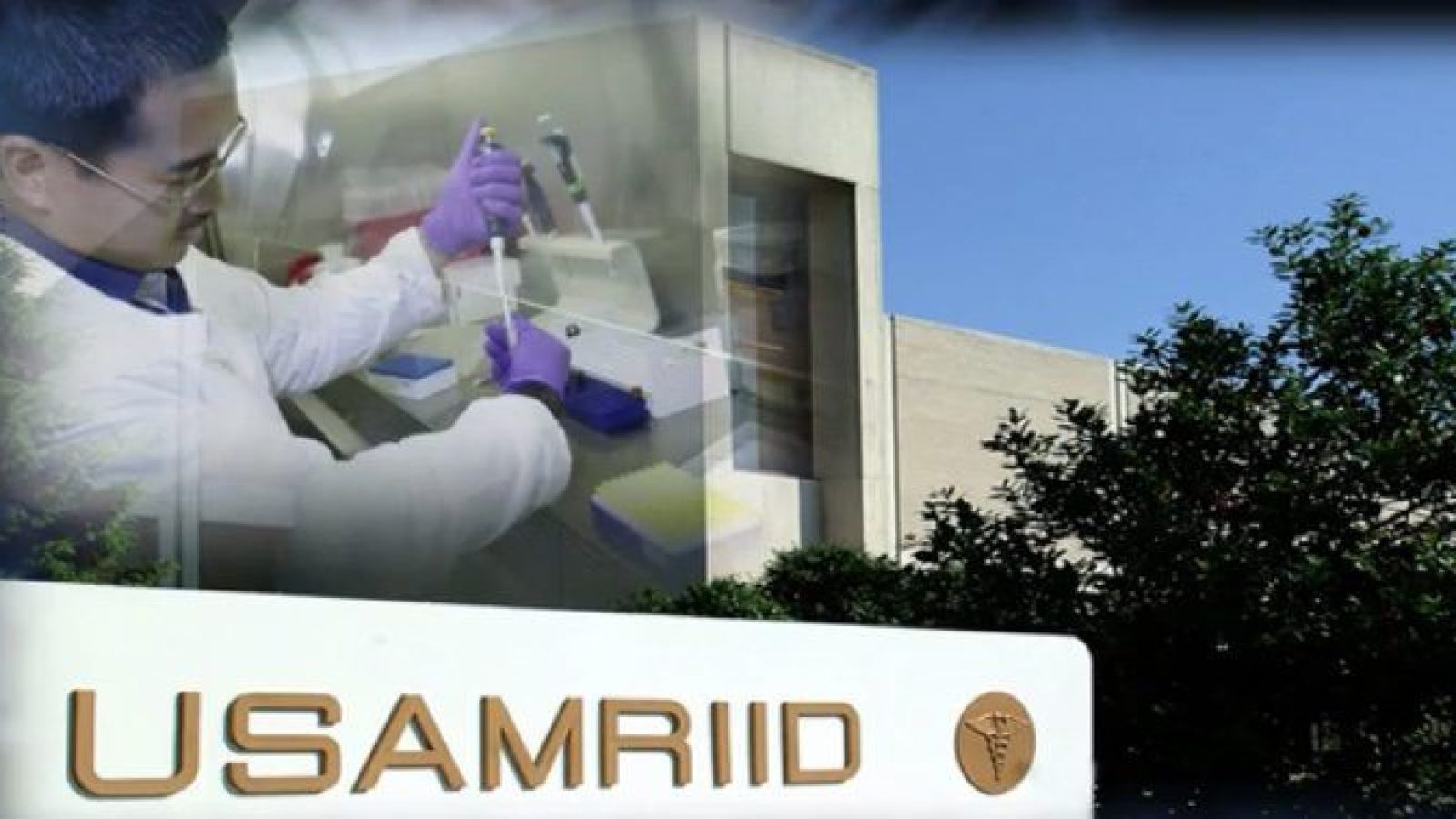Military Times on Friday released a shocking book excerpt originally published by KFF Health News that details “egregious safety breaches and government oversight failures at Fort Detrick, Maryland.”
The article, adapted from investigative journalist Alison Young’s “Pandora’s Gamble: Lab Leaks, Pandemics, and a World at Risk,” (released April 25, 2023) discusses a wastewater leak from the U.S. Army Medical Research Institute of Infectious Diseases (USAMRIID).
The wastewater leak, which reportedly occurred in May 2018, allegedly contained lethal pathogens such as Ebola and anthrax.
https://twitter.com/backtolife_2023/status/1655243872291651585
“The U.S. Army Medical Research Institute of Infectious Diseases at Fort Detrick, Maryland, leaked the water out the top of a rusty 50,000-gallon outdoor holding tank,” Twitter user Pat Webb cites.
“The pressure shot the water over the concrete wall that was supposed to contain hazardous spills. The tank holding waste from labs working with Ebola, anthrax, and other dangerous pathogens had become over pressurized, forcing the liquid out of a vent pipe.”
“An estimated 2,000-3,000 gallons streamed into a grassy area a few feet from an open storm drain that dumps into Carroll Creek — a centerpiece of downtown Frederick, Maryland, a city of about 80,000, approximately an hour’s drive from the nation’s capital,” Webb cites.
“On May 17, 2018, in the wake of devastating storms, workers at Fort Detrick discovered that the plant’s basement was filling with water that would reach 4 to 5 feet deep.”
“The incident occurred on May 25th, 2018, the Friday morning before Memorial Day weekend, and was revealed in a new book titled ‘Pandora’s Gamble: Lab Leaks, Pandemics, and a World at Risk,'” Webb noted.
The U.S. Army Medical Research Institute of Infectious Diseases at Fort Detrick, Maryland, leaked the water out the top of a rusty 50,000-gallon outdoor holding tank.
— Patrick Webb (@RealPatrickWebb) May 7, 2023
An estimated 2,000-3,000 gallons streamed into a grassy area a few feet from an open storm drain that dumps into Carroll Creek — a centerpiece of downtown Frederick, Maryland, a city of about 80,000, approximately an hour’s drive from the nation’s capital.
— Patrick Webb (@RealPatrickWebb) May 7, 2023
The incident occurred on May 25th, 2018, the Friday morning before Memorial Day weekend, and was revealed in a new book titled “Pandora’s Gamble: Lab Leaks, Pandemics, and a World at Risk.”
— Patrick Webb (@RealPatrickWebb) May 7, 2023
Read more of the excerpt from Alison Young’s book at Military Times:
The long Memorial Day weekend was coming up, and the weather forecast showed more rain headed toward Frederick. To protect the plant against further flooding, a decision was made to pump the water inside the basement’s waste storage tanks into the auxiliary tanks outdoors. The hope was to free up an additional 80,000 gallons of capacity, Fort Detrick said in response to questions.
Things didn’t go as planned.
Somewhere along the way, an automatic shut-off feature designed to keep the outdoor tanks from overfilling was deactivated, Fort Detrick officials later said in response to questions.
It was an employee of the National Cancer Institute, which has a research building at Fort Detrick near the plant, who spotted wastewater spewing from an outdoor wastewater tank, over the containment wall, and into a grassy area with an open storm drain inlet that sends runoff into Carroll Creek, according to records and Fort Detrick’s responses to questions. The person called it in to the “trouble desk” of the garrison’s Directorate of Public Works on that Friday morning, May 25.
But nobody checked on the tank until noon, Fort Detrick said. The dispatched workers reported back that they didn’t see any leaking fluid. They checked the tanks again at 2 p.m. and still saw nothing. So nothing was done.
ADVERTISEMENTIf not for the persistence of the unidentified National Cancer Institute employee, the leak would have been ignored.
On the Wednesday after the holiday, that person contacted the Fort Detrick safety manager. They wanted to follow up on their previous report — and this time they provided photos proving the tank had been spraying wastewater nearly a week earlier.
The photos got the base’s attention.
The Fort Detrick Command was immediately notified. So was USAMRIID’s leadership.
But another day passed before anyone alerted state and local authorities.
A significant question remained: What was in the lab wastewater that spewed out of the tank?
If viable organisms like anthrax bacteria had been sent into public waterways, the consequences could be disastrous for USAMRIID, Fort Detrick — and the CDC regulators who allowed them to keep operating despite the jury-rigged sterilization plant.
The full excerpt from “Pandora’s Gamble: Lab Leaks, Pandemics, and a World at Risk” is available at Military Times.
An Amazon description of “Pandora’s Gamble: Lab Leaks, Pandemics, and a World at Risk” reads:
This fearless, deeply reported book about laboratory accidents asks the haunting question some elite scientists don’t want the public to entertain: Did the COVID-19 pandemic start with a lab leak in Wuhan, China?
This is an obvious question. Yet there’s been an extraordinary effort by government officials in China, as well as leading scientific experts in the United States and around the world, to shut down any investigation or discussion of the lab leak theory. In private, however, some of the world’s elite scientists have seen a lab accident as a very real and horrifying possibility. They know what the public doesn’t. Lab accidents happen with shocking frequency. Even at the world’s best-run labs.
That’s among the revelations from Alison Young, the award-winning investigative reporter who has spent nearly 15 years uncovering shocking safety breaches at prestigious U.S. laboratories for USA Today and other respected news outlets.
In Pandora’s Gamble, Young goes deep into the troubling history — and enormous risks — of leaks and accidents at scientific labs. She takes readers on a riveting journey around the world to some of the worst lab mishaps in history, including the largely unknown stories of the lab workers at the U.S. Army’s Camp Detrick who suffered devastating infections at alarming rates during World War II. And her groundbreaking reporting exposes for the first time disturbing new details about recent accidents at prestigious laboratories – and the alarming gaps in government oversight that put all of us at risk.
Sourced through meticulous reporting and exclusive interviews with key players including Dr. Anthony Fauci, former CDC Director Tom Frieden and others, Young’s examination reveals that the only thing rare about lab accidents is the public rarely finds out about them. Because when accidents happen, powerful people and institutions often work hard to keep the information secret.




Join the conversation!
Please share your thoughts about this article below. We value your opinions, and would love to see you add to the discussion!